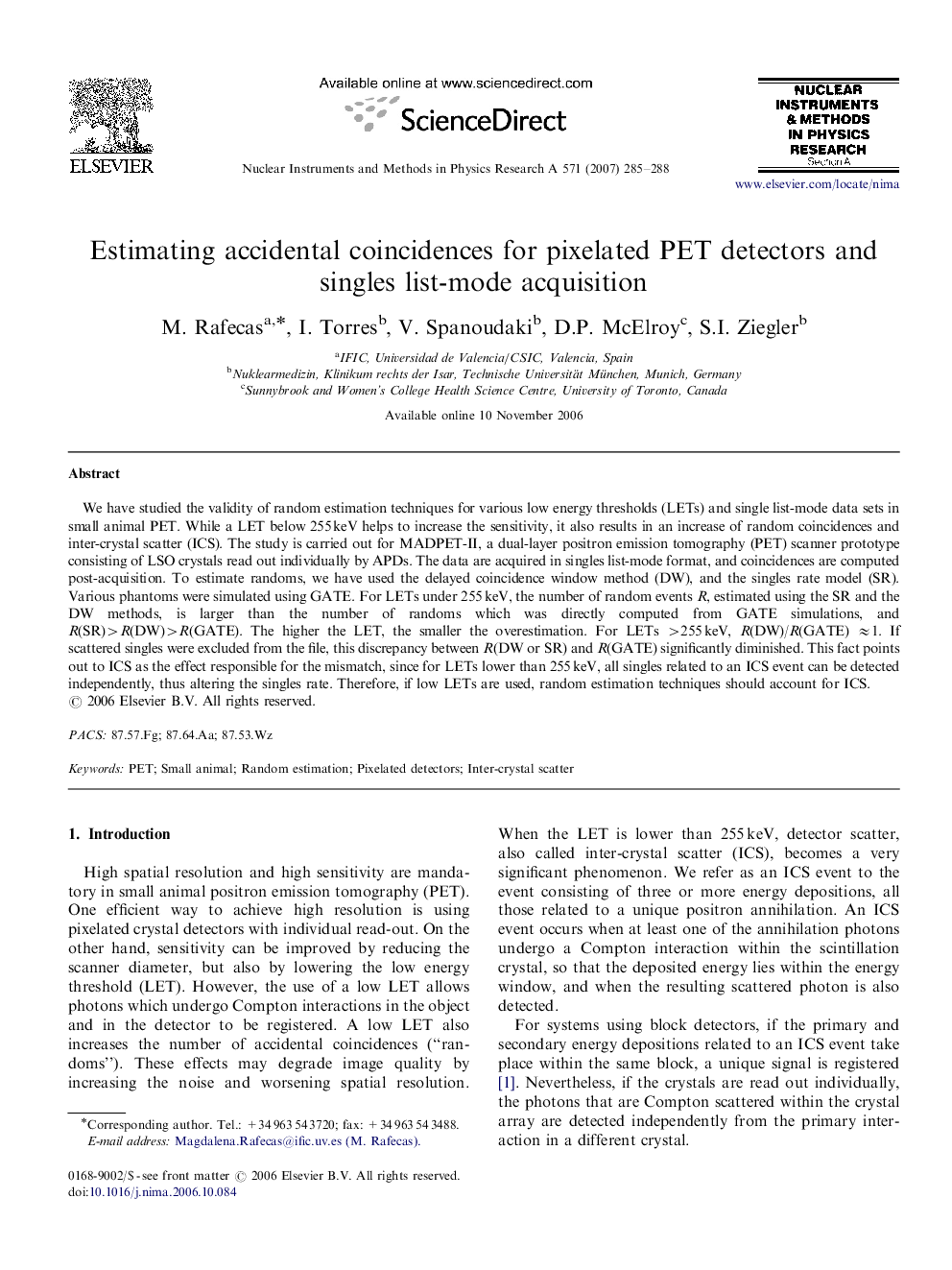| Article ID | Journal | Published Year | Pages | File Type |
|---|---|---|---|---|
| 1831317 | Nuclear Instruments and Methods in Physics Research Section A: Accelerators, Spectrometers, Detectors and Associated Equipment | 2007 | 4 Pages |
We have studied the validity of random estimation techniques for various low energy thresholds (LETs) and single list-mode data sets in small animal PET. While a LET below 255 keV helps to increase the sensitivity, it also results in an increase of random coincidences and inter-crystal scatter (ICS). The study is carried out for MADPET-II, a dual-layer positron emission tomography (PET) scanner prototype consisting of LSO crystals read out individually by APDs. The data are acquired in singles list-mode format, and coincidences are computed post-acquisition. To estimate randoms, we have used the delayed coincidence window method (DW), and the singles rate model (SR). Various phantoms were simulated using GATE. For LETs under 255 keV, the number of random events R, estimated using the SR and the DW methods, is larger than the number of randoms which was directly computed from GATE simulations, and R(SR)>R(DW)>R(GATE). The higher the LET, the smaller the overestimation. For LETs >255 keV, R(DW)/R(GATE) ≈1. If scattered singles were excluded from the file, this discrepancy between R(DW or SR) and R(GATE) significantly diminished. This fact points out to ICS as the effect responsible for the mismatch, since for LETs lower than 255 keV, all singles related to an ICS event can be detected independently, thus altering the singles rate. Therefore, if low LETs are used, random estimation techniques should account for ICS.
